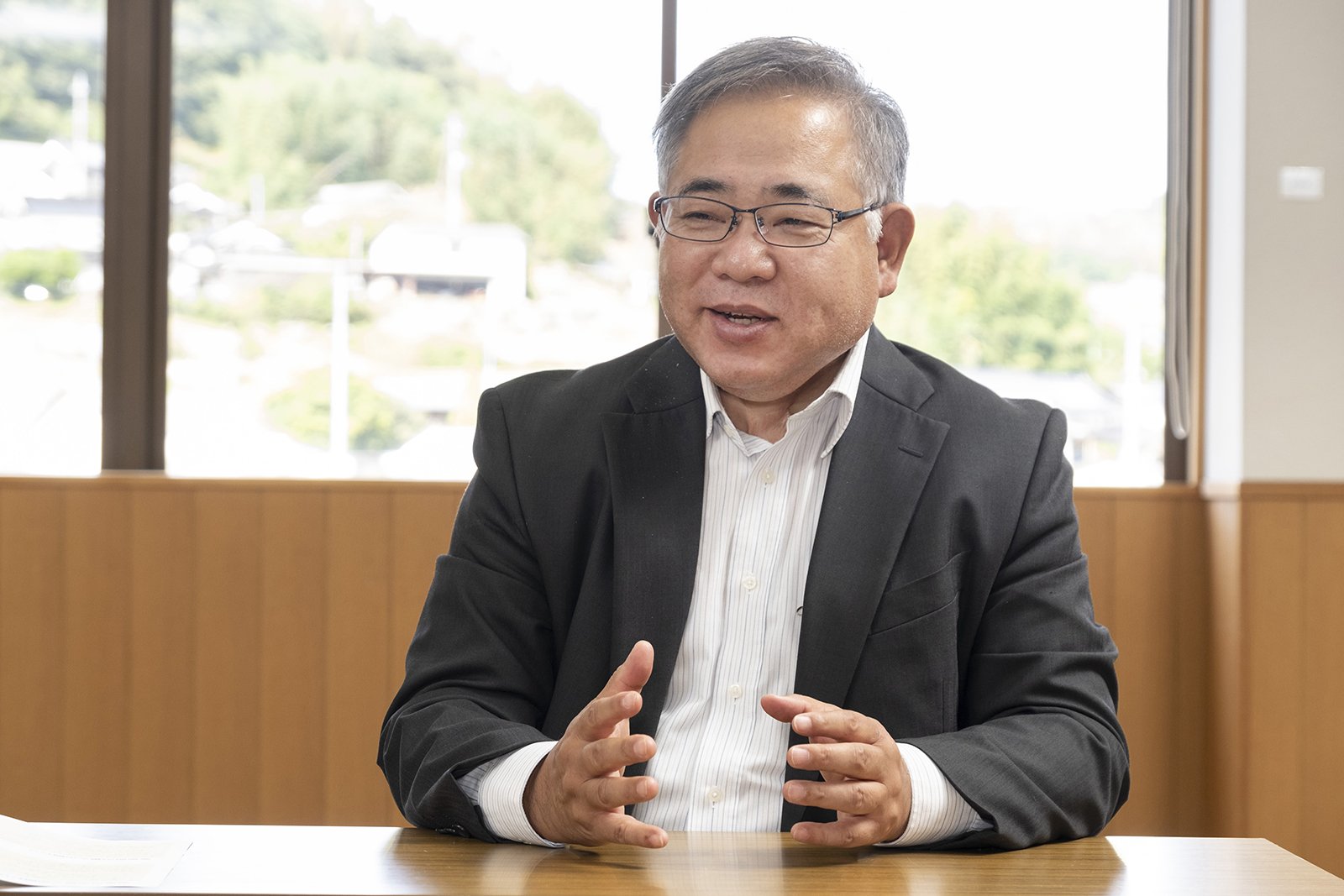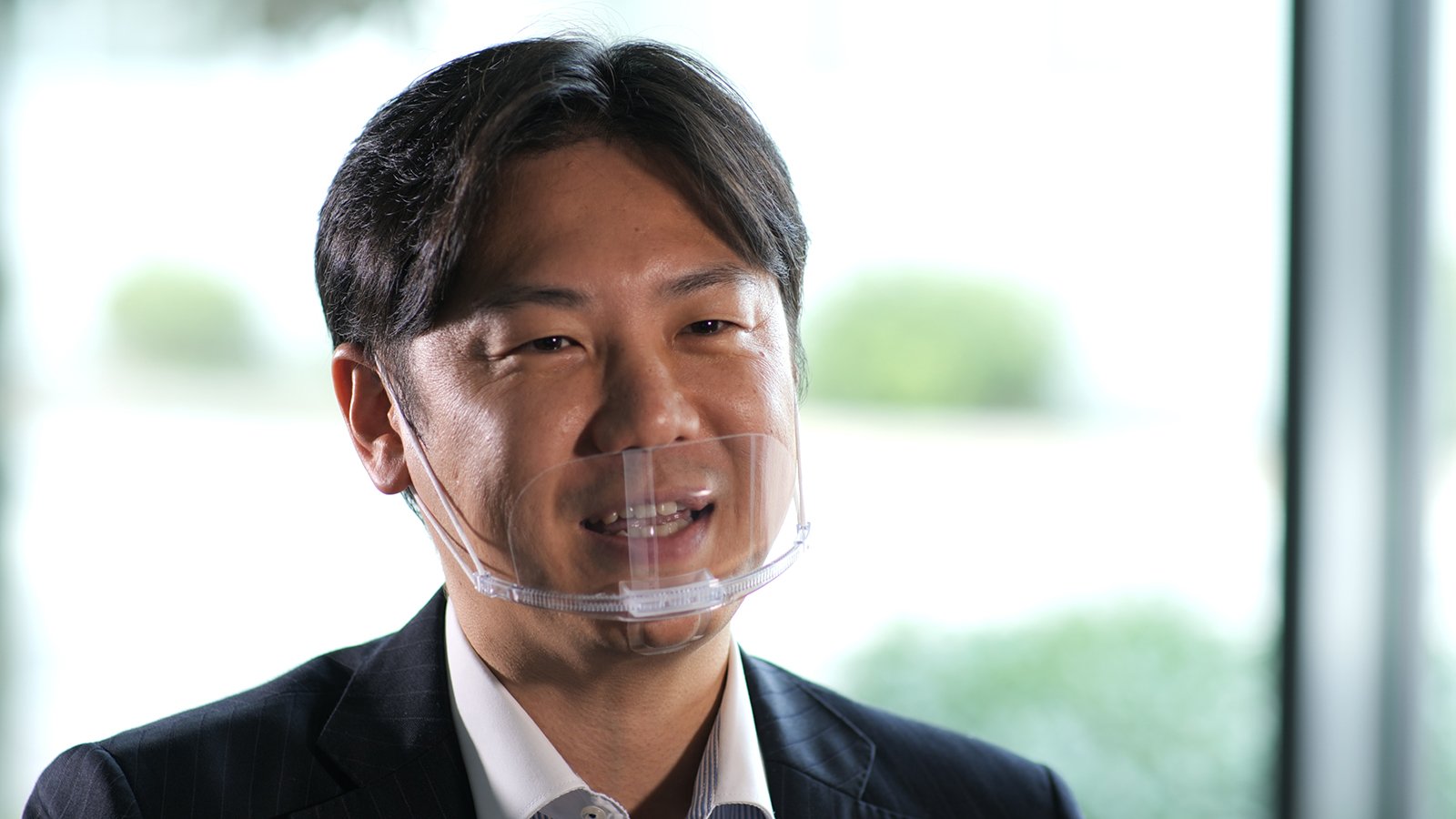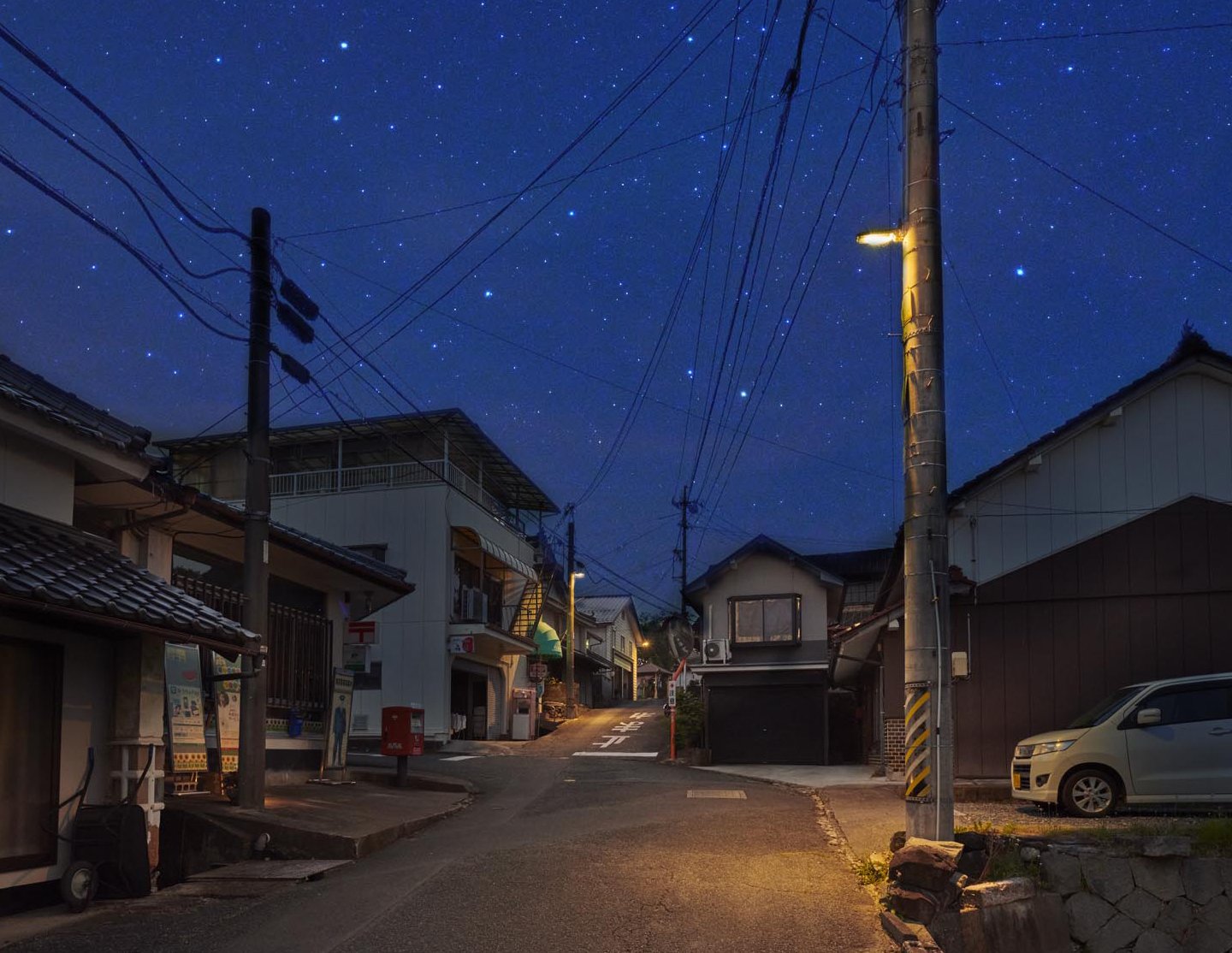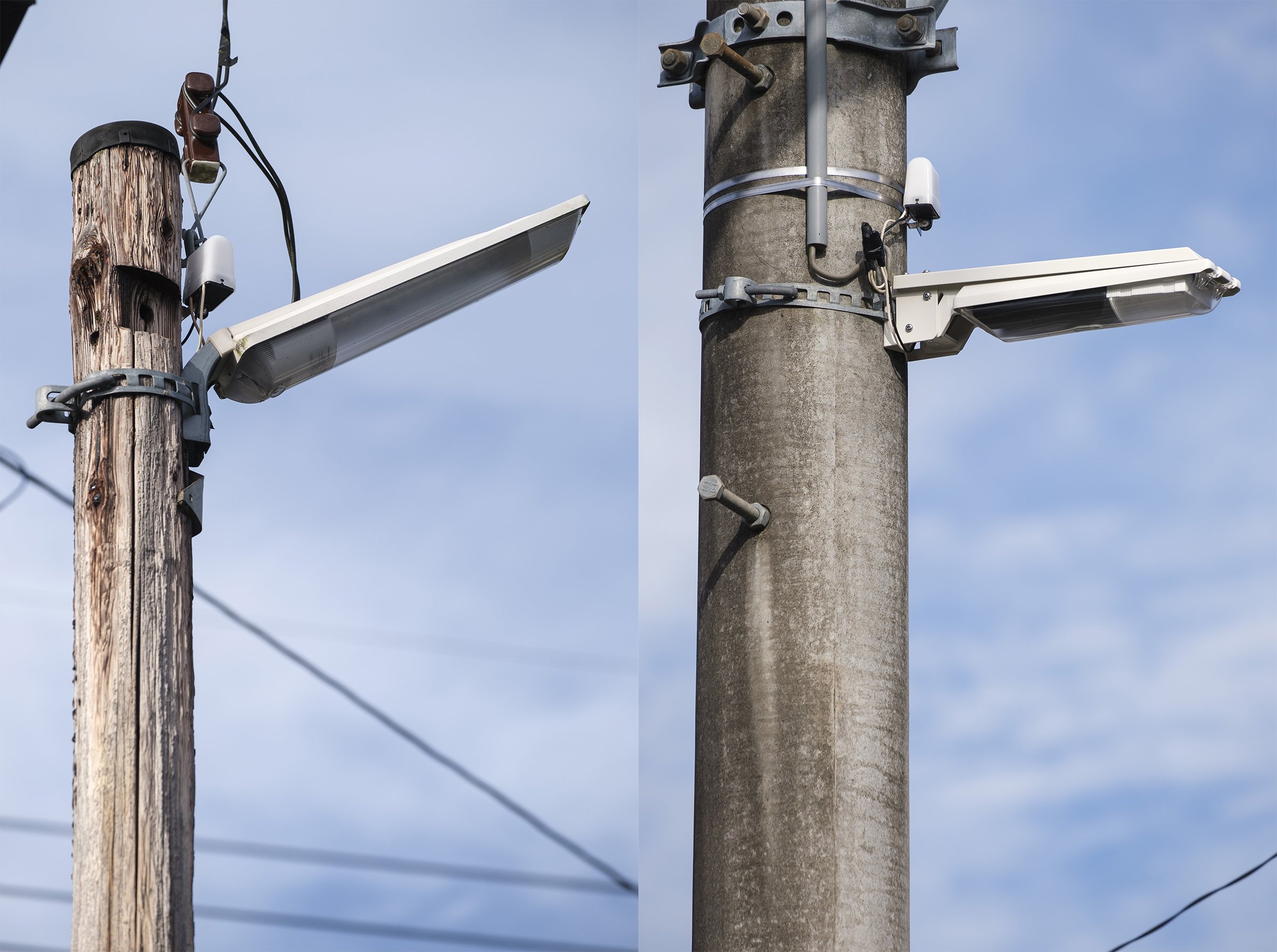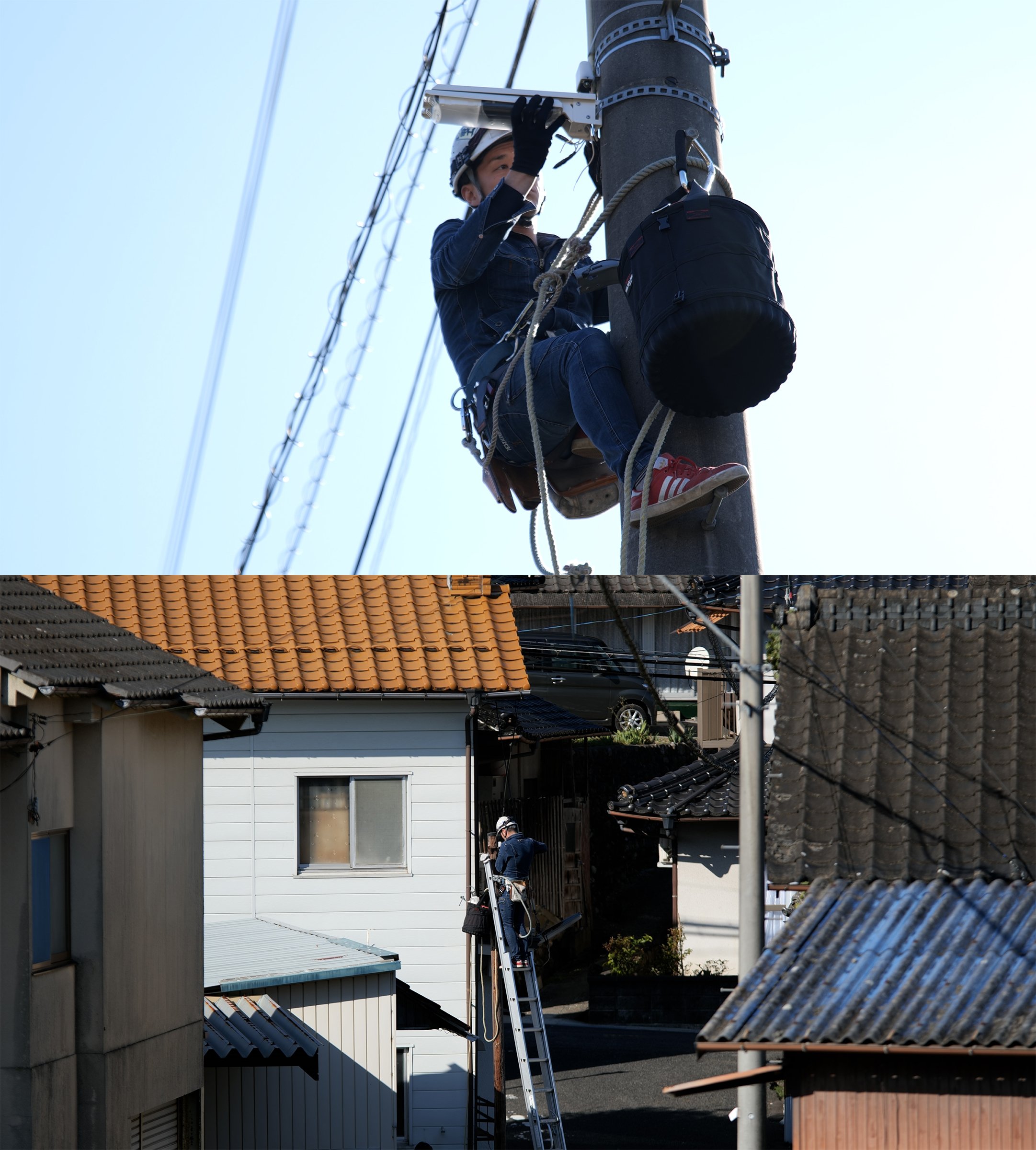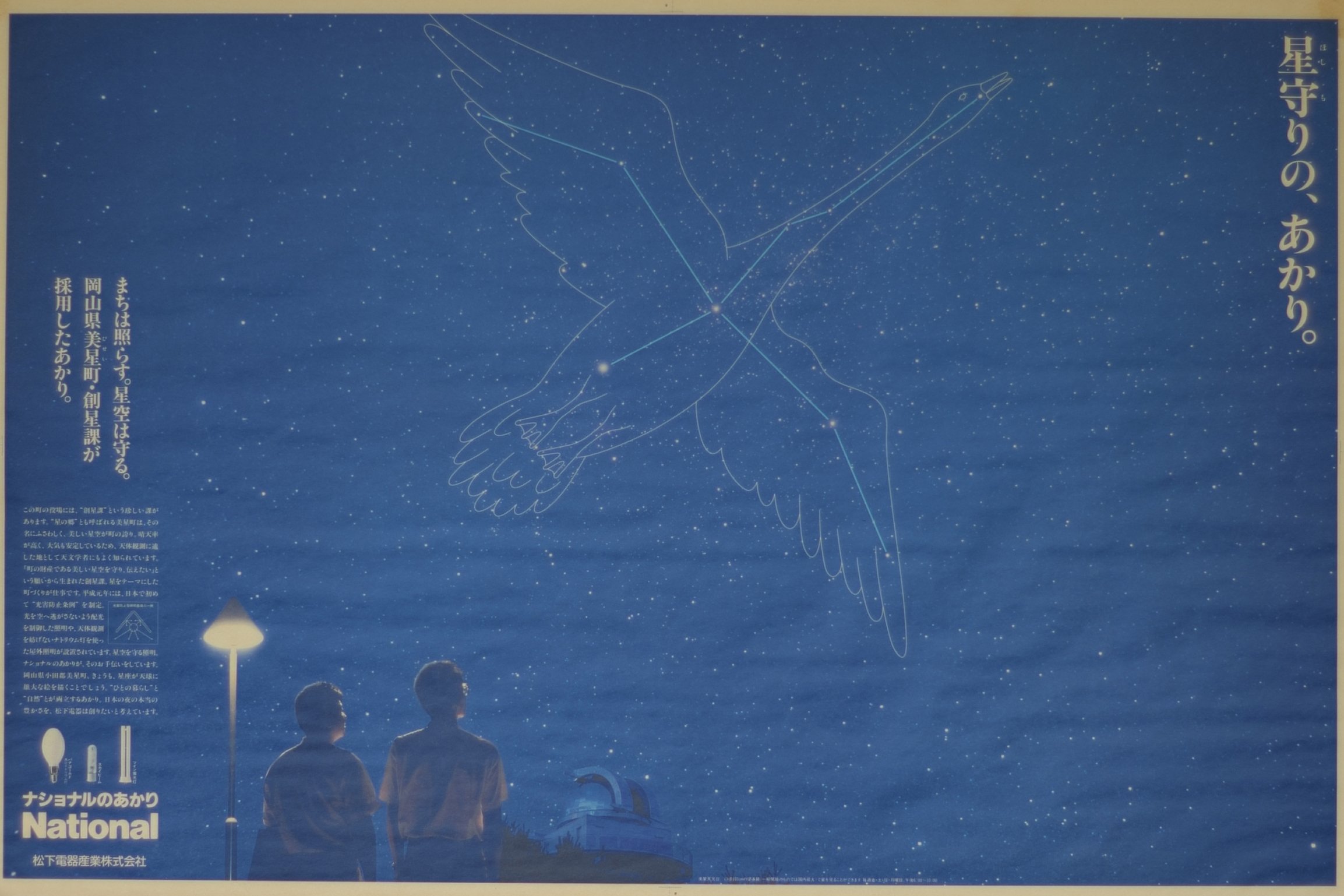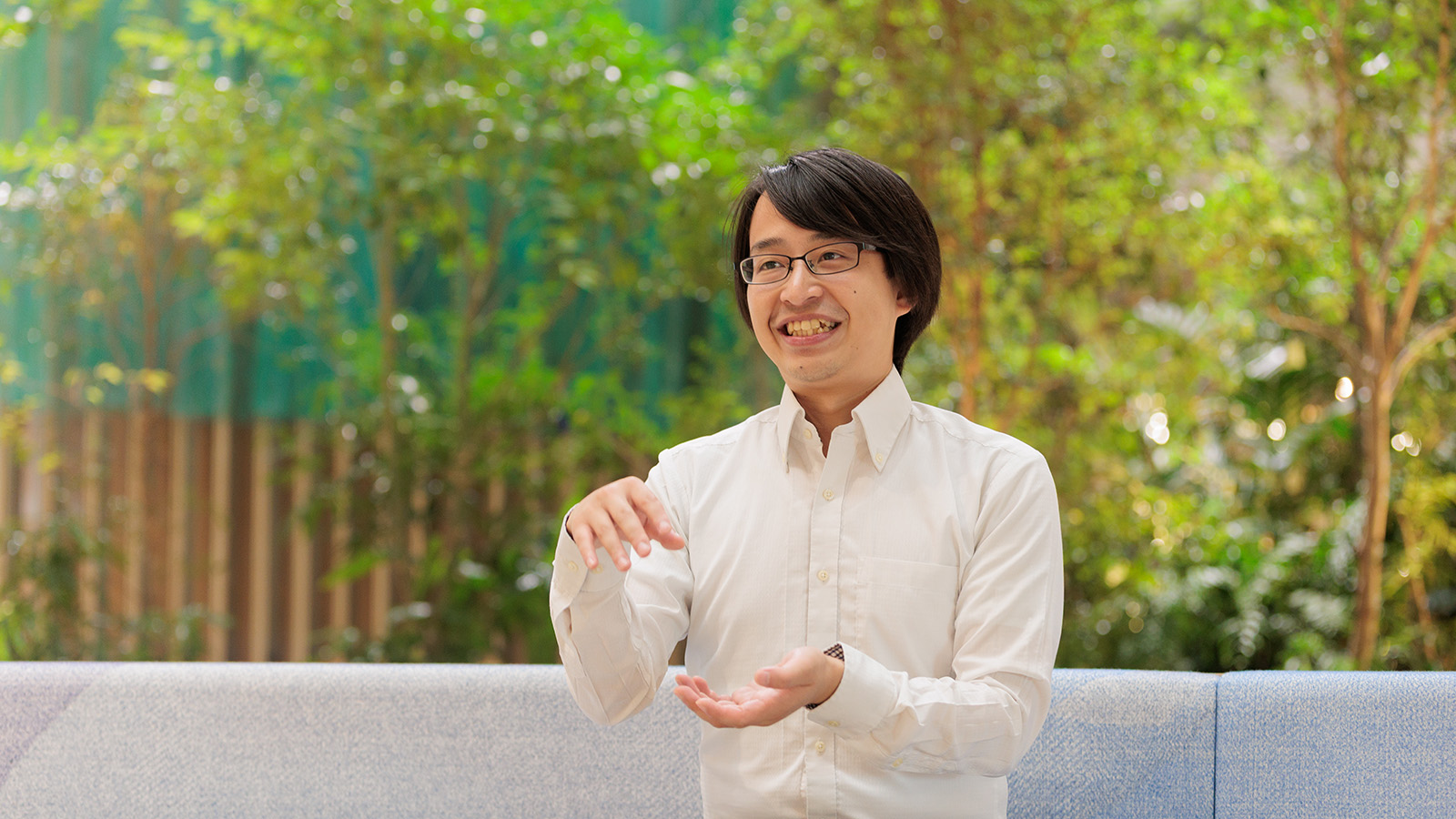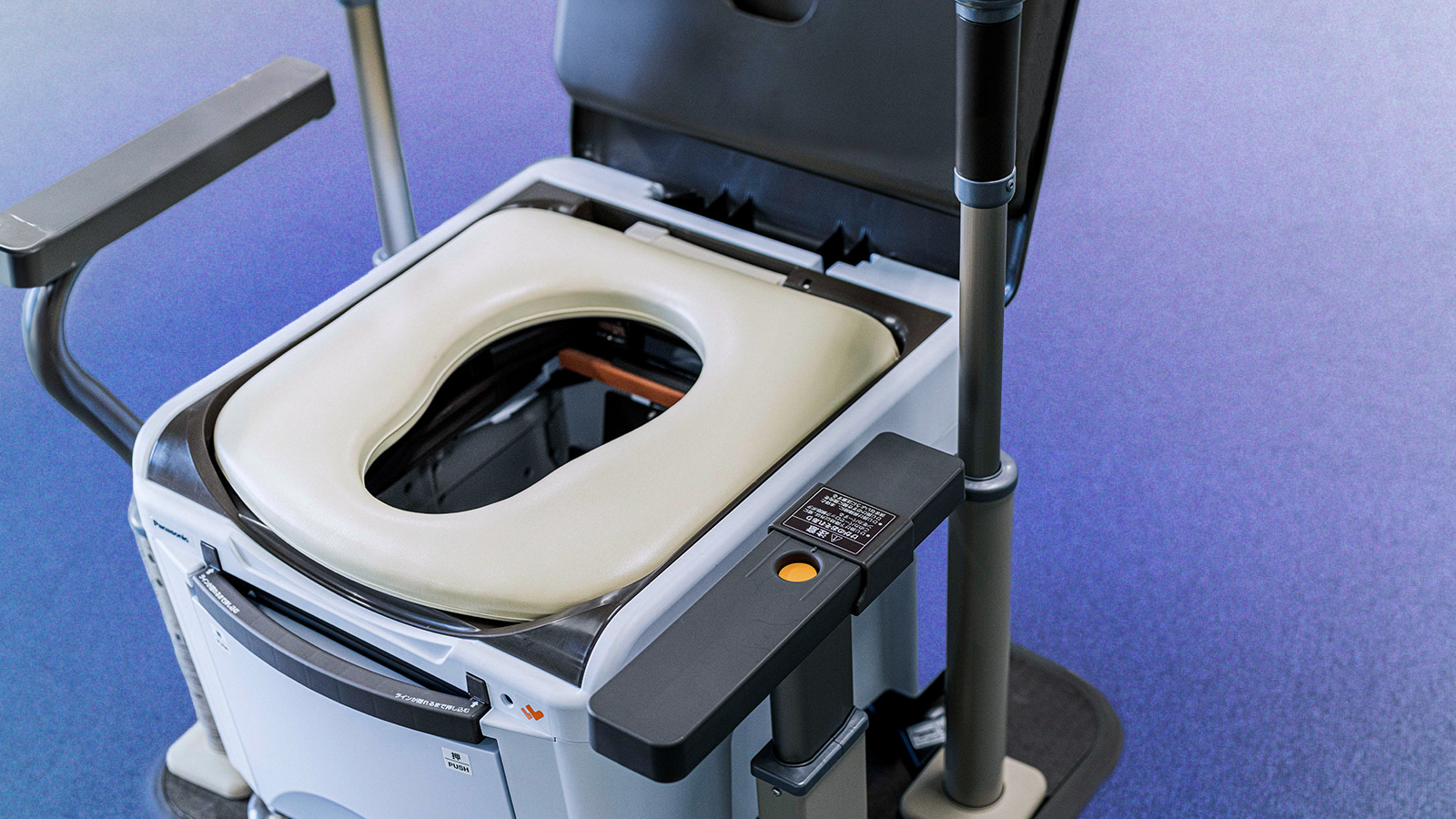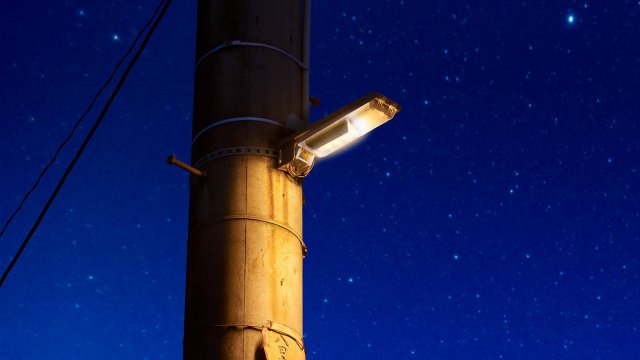
Bisei Town in Ibara, Okayama Prefecture, is famous as Japan's premier "starlit sky" location. The town is currently investing efforts toward obtaining certification from the NPO International Dark Sky Association (IDA) as a Dark Sky Place. But that certification requires a shift from the existing security lighting to lighting that satisfies that association's strict criteria. Panasonic provided full cooperation to that effort by developing security and street lighting that clears IDA's exacting standards. In January 2020, the company became the first Japanese manufacturer to gain such certification. The town, IDA, and Panasonic have joined forces to preserve the beautiful star town through various initiatives, the stories of which they share in their own words here.
Summary
- Bisei Town in Ibara City, Okayama Prefecture, is famous as a "star town", having been the first place in Japan to enact ordinances for the prevention of light pollution.
- The town is currently investing efforts into obtaining certification as a Dark Sky Place from the NPO International Dark-Sky Association (IDA). However, they are required to have light bulbs with a color temperature below 3000 Kelvin (K) and LED security lighting with zero light escaping above.
- The Panasonic Life Solutions Company has provided total cooperation in the development of the security lighting. In January 2020, the company produced the first-ever Japan-made product to clear the IDA's strict standards.
- Through interviews with key persons, this article highlights the initiatives of the town, the IDA and Panasonic in seeking recognition as a dark sky world heritage.
Eliminating Excess Lighting in Our Beloved Star Town
Okayama Prefecture is called the "Land of Sunshine" and is famous as an ideal spot for stargazing thanks to a high incidence of clear skies and stable weather patterns. In 2018, seven municipalities in the prefecture, including Ibara City, Asaguchi City, Kurashiki City, Okayama City, and Yakage Town, implemented a project to help solve local issues, choosing to capitalize on their astronomical and starry sky resources to attract tourists to the region. Under the banner of "Land of Astronomy Okayama," they run monitor tours, stamp rallies, and other campaigns.
Among the municipalities is Bisei, a town that has made stars central to its town revitalization projects. Bisei, whose Japanese characters read "beautiful stars", merged with Ibara City in 2005. The area of Hoshida is home to Hoshio Shrine. Said to be the site of three fallen meteors in the "Hoshio Koshin Legend," it is the venue for a large-scale Tanabata Festival held on August 7 every year. In 1993, the Bisei Astronomical Observatory opened with a commanding view of the town and has become a destination for countless astronomers and stargazing fans from all over Japan.
In November 1989, four years before the construction of Bisei Astronomical Observatory, Bisei Town became the first place in Japan to enact ordinances for the prevention of light pollution (Bisei Town Light Pollution Prevention Ordinance). Light pollution here refers to light that escapes from artificial lighting making it difficult to see the starlit sky. In order to preserve the beautiful starlit sky, the town has implemented light fixtures that prevent the spread of light upwards and ordinances to encourage the switching off of outdoor lights between 10pm and sunrise.
The movement to enact the ordinances was led by Takuo Date of the Bisei branch office of Ibara City, Okayama. The impetus came from a star-related event 32 years ago.
"We held the inaugural 'Starfall Night' event in 1988, attracting about 100 astronomers from around Okayama Prefecture, but poor weather turned it into a 'Rainfall Night' instead," said Mr. Date with a wry grin. "As the astronomers debated about the night sky over drinks, we were told, 'An International Dark-Sky Association (IDA) has been formed. Bisei Town should be the vanguard in Japan in protecting the starlit sky from light pollution.' The creation of the IDA that year was a hot topic among the astronomers."
"For those of us in Bisei, the stars are always there; we had never thought about the starlit sky as a powerful resource. But listening to the opinions of outsiders, we realized that town revitalization focused on the stars could form the basis for our town branding, and that's why we enacted the light pollution prevention ordinance," says Mr. Date.
Nonetheless, as the first such initiative in Japan, it was an uphill battle. Mr. Date worked tirelessly, consulting the Environment Agency (as it was known at the time) and holding symposiums for opinion exchange, in an effort to establish the ordinances. He went on to explain, "We started from 'what exactly is light pollution?' and finally reached the enactment of the ordinances one year later."
As an Ibara City employee, Kenji Fujioka of Ibara, Okayama, has been engaged in promoting the appeal of local tourist attractions since 2015. According to Mr. Fujioka, "Bisei Town was the first to institute a light pollution prevention ordinance, and our beautiful starlit sky is a precious asset. I had always thought we have no option but to capitalize on that."
Kenji Fujioka
Assistant Director and Tourism Section Chief
Settlement and Tourism Division, Future Planning Department
Ibara City, Okayama Prefecture
Mr. Fujioka learned of the existence of IDA Dark Sky Places from employees at the Bisei Astronomical Observatory. These places also commonly known as dark sky world heritage cover six categories: Dark Sky Community, Dark Sky Park, Dark Sky Reserve, Dark Sky Sanctuary, Urban Night Sky Place, and Dark Sky Friendly Development of Distinction. Amid the calls for revitalization of the countryside, Mr. Fujioka felt that if the town was to use its starlit sky as a tourism resource, certification as a starry sky reserve based on global standards was essential. He visited IDA's Tokyo office in 2016 and that is where the long road to certification began.
Bisei Town's goal is certification as a Dark Sky Community. This category does not pertain to park areas surrounded by nature and away from human habitations, but rather to municipalities where people actually live, thus presenting the challenge of how to limit light. It promises to be a great achievement if approved, as Bisei would become the first Dark Sky Community in all of Asia. Toyo University Faculty of Business Administration Associate Professor and IDA Tokyo Chapter Leader Nobuaki Ochi reflects on when he was first approached by the town.
"Bisei Town had all the necessary provisions for a dark sky place in place from the outset. They have the light pollution prevention ordinance and were regularly holding starlit sky events. The only outstanding issue was the security lighting.
"The Bisei Town ordinance stipulates the implementation of lighting with no upward light leakage (light emitted above the horizontal plane), also known as full cutoff lighting. But just as in other towns, white LED lights were installed as security lighting, and this had meant some upward light leakage. I recall suggesting that certification would be impossible if these were not changed."
Nobuaki Ochi
Associate Professor, Faculty of Business Administration, Toyo University
IDA Tokyo Chapter Leader
From around 2011, the town had started replacing fluorescent security lighting with stronger white LED lighting. At the time of enactment of the ordinance, there were no major issues because there were so few security lights anyway, but when the cost of LED security lighting fell, each neighborhood council set about increasing installations. The standards for dark sky places hold, however, that there be absolutely no upward leakage of light and that installed light bulbs have minimal blue light with a color temperature below 3000K.
"The need to replace security lighting that had just been replaced took the discussions to a whole new level. Because they had been installed at the neighborhood council level, action couldn't be spearheaded by the government. It required the agreement and devotion of people at the local level otherwise we couldn't move forward. From 2016 onwards, Professor Ochi gave presentations every year to garner understanding of the importance of lighting to the dark sky place standards and to encourage active participation by local residents," explained Mr. Fujioka.
The culmination of this steady effort came in March 2019 with the initiation of the "Bisei Hoshimori Project"--a cooperative project between the Bisei Tourism Association and Ibara City aimed at certification as a dark sky place. The project video is a promotion of the town as a whole and includes an appearance by Ibara City Mayor Isao Oshita.
"This is when we commenced our search for security lighting that meets the dark sky place criteria, but at that time no such domestic producers existed. We visited the Okayama branch of the Panasonic Life Solutions Company seeking cooperation in our project. We found them to be so helpful. They immediately lent us a sample of 10 lights," Mr. Fujioka noted.
The sample lights were test installed in the Yokaichi district of Kurotada, Bisei, before an inspection visit by Professor Ochi. He pointed out that the bulb color was suitable, but because of the angle at which the lights were installed, there was upward light leakage. In order to solve this problem, a project team including the city mayor visited Panasonic headquarters in Kadoma, Osaka, to discuss the possible development of light fixtures conforming to IDA criteria.
"The mayor's direct appeal to Panasonic was met on the spot with a response, 'Understood. We will get to work on developing as fast as we can.' We made the request in September 2019 and the basically completed product was ready before year-end. I think this shows just how fast they moved for us," Mr. Fujioka added.
Contributing to Society Through Product Development--Many Lessons Learned
The Panasonic contact person was Kyota Mukunoki of Panasonic Life Solutions Company, who at the time was affiliated with Okayama Electric Works.
Mr. Mukunoki explained, "Based on details from Professor Ochi, we passed the request to the lighting division of the Life Solutions Company and moved ahead with development through trial and error. The biggest challenge was how to limit upward light leakage. We inserted louver slats and then realized they had to be placed horizontally. We were driven by the motivation of designing a product essentially from scratch."
Kyota Mukunoki
(At the time) Division Chief, Okayama Electric Works
Chugoku and Shikoku Electric Works
Life Solutions Company, Panasonic Corporation
The sample lighting originally lent to the town also contained the cut louvers, but placing them horizontally presented the greatest challenge. The role of security lighting is to shine bright light on the surrounding area, so making security lighting with reduced luminosity based on "gentle light" that blends in naturally was obviously outside normal assumptions. The certified outdoor lighting developed and produced by Panasonic is based on many years of accumulated expertise and contains great improvements that go far beyond appearance alone. The resulting special-order lighting meets the criteria for zero upward light leakage and color temperature below 3000K.
The IDA's Professor Ochi had high praise for the finished product: "It can be installed horizontally and completely blocks light leakage due to the insertion of cut louvers. I have no doubt this lighting will obtain the designated certification." Just as he predicted, in January 2020 two Panasonic products--"light pollution prevention security lighting" and "light pollution prevention street lighting"--became the first domestically produced items to obtain IDA certification. Currently, several lighting fixtures installed in the abovementioned Yokaichi district envelop residents in gentle light that preserves the starlit sky.
"There has been talk of light pollution prevention before, but mostly in regard to light leakage from large structure lighting at sporting fields and stadiums. We were presented with a brand new challenge when it came to product development to prevent light pollution for nature preservation coupled with specific local criteria. I really believe the project was driven by a strong sense of urgency and excellent teamwork. We feel we have helped solve a current social issue, especially in light of SDG trends, and it has been an incredible learning experience for our company and for me personally," said Mr. Mukunoki.
Conventional lighting which caused upward light leakage (left) and specially developed security lighting installed horizontally to protect the starlit sky (right).
Bonds with Panasonic Date Back 27 Years
In an effort to gain certification as a dark sky place, security lighting in approximately 410 locations around the town will be replaced in turn from white LEDs to the IDA-certified lighting. To that end, the plan is for Bisei Tourism Association to secure funds on its own, with the shortfall to be covered by Ibara City. One method employed by the tourism association was crowdfunding. Run over six weeks from January 14 to February 28, 2020, the initial goal was set at 2 million yen, but the fundraising was an enormous success resulting in approximately 6 million yen raised.
"The success of the crowdfunding served to deepen understanding among locals and also as a form of publicity. I had some reservations about our original goal of 2 million yen, but we achieved that in no time, and in the end, we received three times that amount. It was thanks to astronomy fans spreading the word instantly, mainly through SNS, and then boosted by Panasonic's February press release 'Dark Sky Friendly Lighting' featuring the IDA-certified lighting (link in Japanese). So many people shared comments about wanting to protect the starlit sky," stated Mr. Fujioka.
Flyers were also distributed to every home asking for donations, targeting the elderly who are not accustomed to using the internet. The impact was clear as some people dropped donations directly into the collection box set up in the Bisei branch office. Mr. Date uses the local dialect as he tells us, "so many elderly people came in to donate saying, 'I brought you some money because you're working so hard on this star thing.'"
According to Mr. Fujioka, the plan is to install the security lighting from 2020 to 2021 and work in parallel to replace outdoor lighting at public facilities. He is hopeful that "by switching to IDA-certified security lighting, our experience can be used as a municipal observation program." The fact is that Panasonic has already received multiple inquiries about the "Dark Sky Friendly Lighting (IDA-certified security lighting)" and Panasonic's Mr. Mukunoki feels positive about the response saying, "In that sense, I think this project is already linking in to future product development."
The IDA's Professor Ochi said, "I must say that awareness of light pollution is extremely low at present. I hope that many people turn their attention to the issue of light pollution through these initiatives by Bisei Town." Panasonic also has a role to play in this awareness raising. Since October 2020, television commercials for LED lights drawing a link with the SDGs have been aired nationwide and they feature the Bisei Town initiatives.
At the end of our interview, Mr. Date shared a downsized copy of a newspaper ad. It is a full-page ad from the September 27, 1993 Nihon Keizai Shimbun and it talks about outdoor lighting installed near the Bisei Astronomical Observatory by National (the former name of a Panasonic brand). Mr. Fujioka brought the discussions to a close saying, "I think there's a definite bond here, working together to develop these new LED security lights almost 30 years later." The cooperative relationship between Ibara City, IDA, and Panasonic is set to continue. But first they hold their hopes high for certification as a dark sky place as soon as possible.
Panasonic developed its "Dark Sky Friendly Lighting (IDA-certified security lighting)" in response to Bisei Town's request. In November 2020, the Minamirokuroshi district of Ono City, Fukui Prefecture, test installed the lighting as the first step in its bid for certification as a "Dark Sky Place (Urban Night Sky Place)". It has already confirmed zero upward light leakage and, moving forward, the plan is to get input from residents and decide on whether to go ahead with full installation. Panasonic hopes that its "Dark Sky Friendly Lighting" may serve as the light that preserves starlit skies all over Japan.
- Reproduced from the website "Mirai-kotohajime," by courtesy of Nikkei Business Publications, Inc.
# # #
- Disclaimer:
- We would like to note that Panasonic Newsroom is not a place to address personal Customer Service issues. Even though this is not the forum, Panasonic is always eager to resolve your concerns. Our local customer services contacts can be found at Global Support or you can see our list of Social Media Accounts to find the right channel for your queries and concerns.


